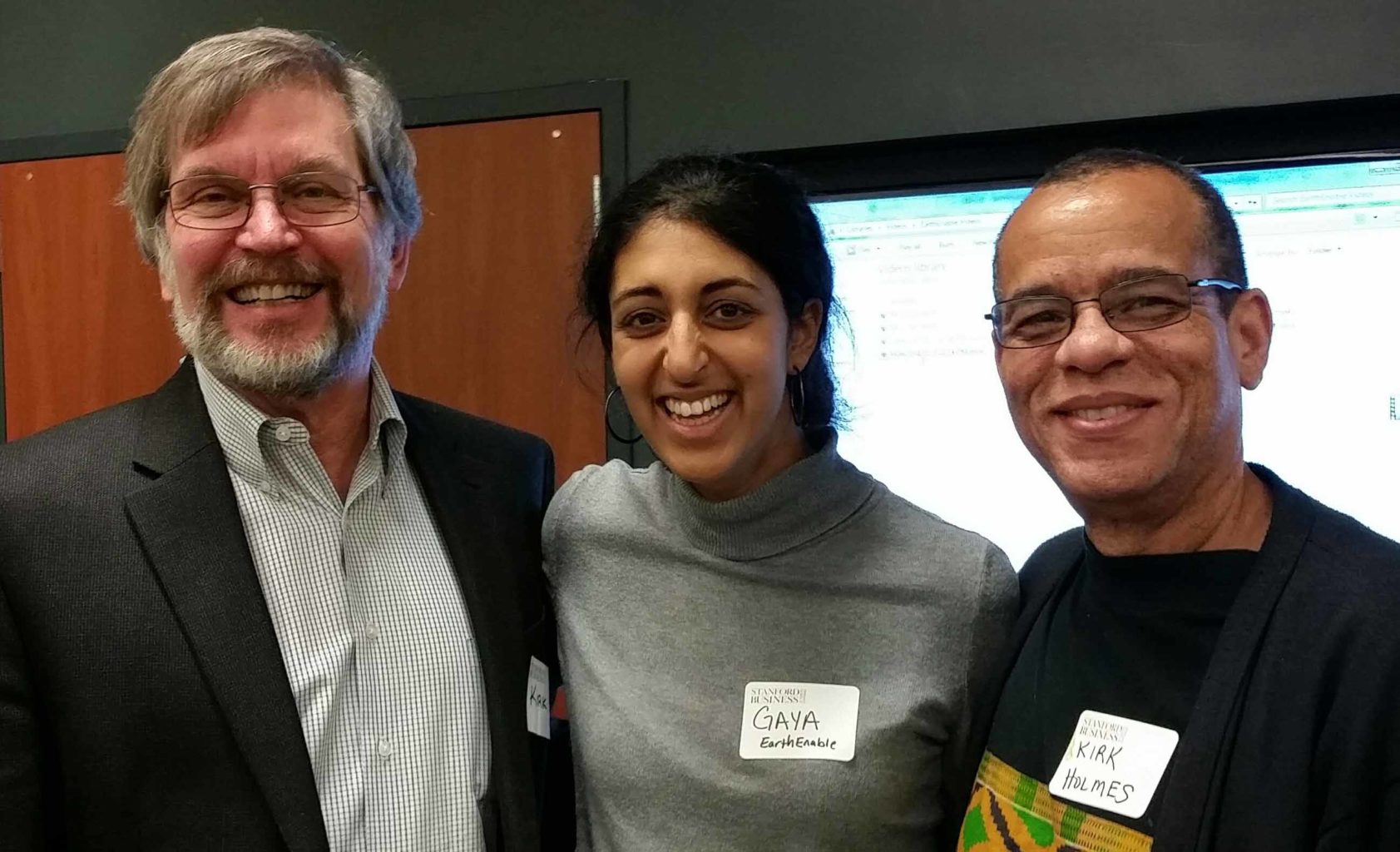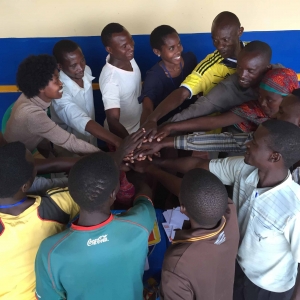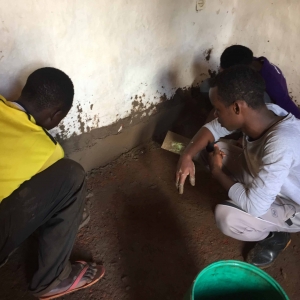
Gayatri Datar (center) of EarthEnable with Project Redwood co-sponsors Kirk Renaud (GSB class of 1980) and Kirk Holmes (GSB class of 1987).
Gayatri Datar has the technology, materials, and distribution network to deliver a revolutionary flooring product that eliminates health hazards faced by millions. It costs significantly less than its viable alternatives, and target consumers who see the product invariably want it. Unfortunately, those likely customers, most of them, earn only ten dollars a day, sometimes less. So in spite of the product’s benefits and cost advantages, it is often financially out of reach.
Back in November of 2016, a group of 20 or so Stanford GSB alumni and friends put their heads together to help generate ideas to help get the simple but elegant product to those who need it most.
Datar, a 2014 Stanford GSB alumna, heads the non-profit EarthEnable. The enterprise began as a project at Stanford’s multi-disciplinary Design for Extreme Affordability (DEA) class; Datar and three other students traveled to Rwanda with a charge to improve health in poor communities.
Through the DEA’s ideation and development processes, the team learned about the dangers of the omnipresent dirt floors: disease-carrying pests, asthma-inducing dust, and earth and water-borne pathogens. The down-stream result of the project was an attractive, disease-resistant, durable flooring system made from compacted layers of soil, gravel, sand, and clay sealed with a flax seed oil varnish.
Grants from Project Redwood in 2014, 2015, and 2016 helped EarthEnable establish itself in Rwanda. So far, its team of 116 sales representatives, masons, and administrators has reached more than 1,000 households. The enterprise currently installs about 20,000 square feet of flooring per month.
The finished cost of $3.50 or so per square yard is relatively inexpensive, but still unaffordable for many households, so EarthEnable is experimenting with lower cost options.
The November brainstorming session aimed to arm Datar with ideas for do-it-yourself installations, and other possibilities for improving market penetration.
The group relied on parts of the DEA creative process, which begins with empathizing with customers, defining the situation, ideating possible solutions, then prototyping and testing quickly, and repeating the process until satisfactory solutions are found.
Eager and hands-up participants generated as many ideas as they could in a fun and fast-paced session, no judgments on practicality allowed! Here are some of their thoughts:
- Put down temporary “party boards” for dance parties to help compact the base floor
- Offer a movie night pairing an entertainment film with an installation training film (and free food and prizes)
- Create special “brick shoes” that could be used to compact the floor
- Create registries to provide a means for community members to contribute to the cost of floors for newly-weds
- Develop modular kits that allow small, incremental installations
- Install demonstration floors in bars, where men would notice and want them
- Develop a “barn raising” model where community members help each other with installations
What do you think? If you’ve got any ideas, Gayatri Datar would love to hear from you! Email her through Project Redwood at info@projectredwood.org

